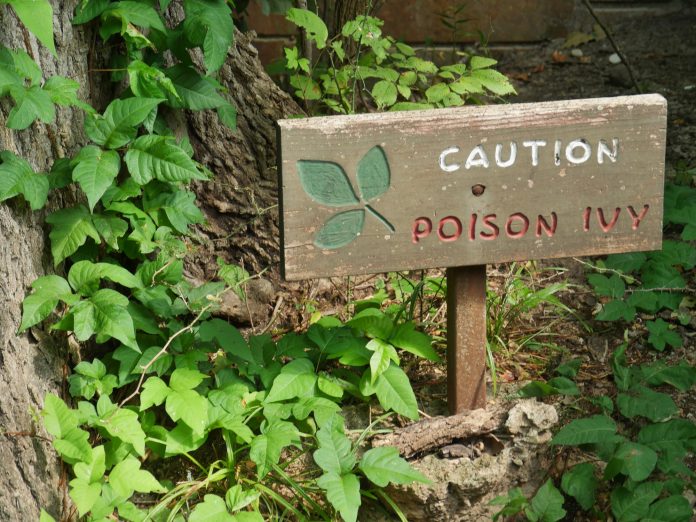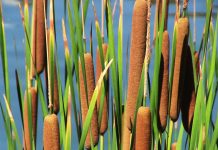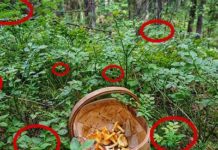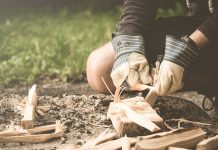Poison Ivy (Toxicodendron radicans) and Poison Hemlock (Conium maculatum) are both considered hazardous to humans, especially children. Hence, extracting the poisonous pair is recommended.
That’s a lot better said than done, of course. So, as Sun Tzu said: “Know the enemy.”
Characteristics of Poison Ivy
Technically, Poison Ivy is not “poisonous”. Rather, it has a especially nasty oil called Urushiol found in the leaves, stem and roots. The sticky oil can be deposited on your skin just by brushing against the leaves and a serious rash or blisters will develop very quickly.
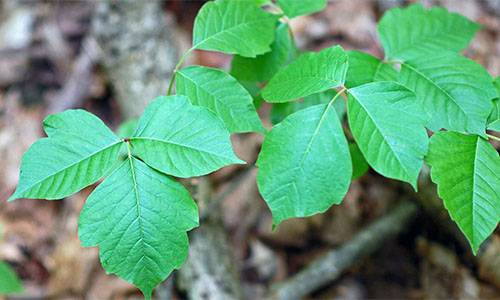

As the name suggests, when it matures it has the typical habit of a vine, and, sadly, it is a perennial one. This has thick, aerial roots to help this bind itself as it climbs, so it can be difficult to dislodge older vines.
It has leaves which appear hairy in groups of three, white berries, and aerial roots. It is also deciduous, and its seeds have been viable for five to six years.
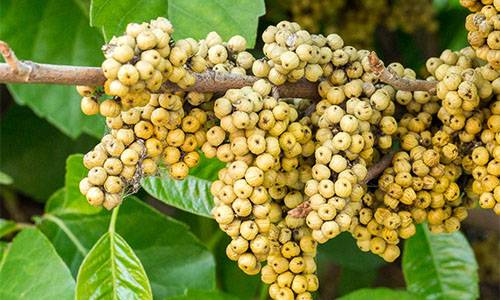

Characteristics of Poison Hemlock
Poison Hemlock is a biennial herb, and is seed regenerating. But it can behave more like a perennial in ideal conditions. It’s also a prolific seeder, but the good news is that the seeds remain viable for just two to three years.
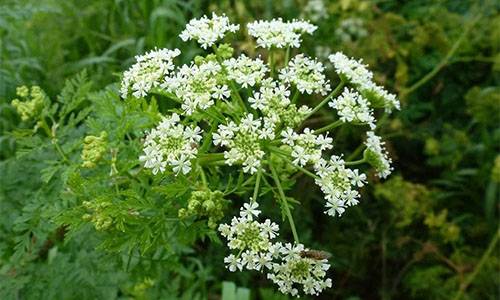

Mature plants look similar to carrots and parsnips, except that hemlock has pointed leaves, purple spots along the stems, and isn’t hairy. They can grow from 3 to 10-feet tall.
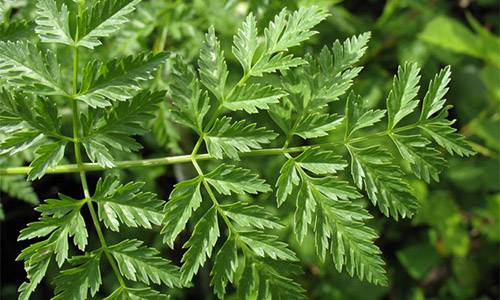

Poison Hemlock is a highly toxic plant because of the alkaloids found in it, and if swallowed, the entire plant is toxic. Poisoning may also happen through open wounds, or through the eyes, through touch. Hemlock handling can cause a skin irritation in some people, and even a severe rash.
Related: Natural Home Remedies against Migraine Headaches
Preparation for Removal
So, how do you remove a poisonous weed that is 6 ft tall? Or a vine in contact which causes blisters? The answer is: very carefully!
The first step is appropriate clothing. Long trousers, a long-sleeved shirt, sturdy (preferably water-proof) gloves, and shoes closed.
The next move is to carefully pick your weapons. My go-to tools are a long handled shovel, a rake and a pair of secateurs. Long handled tools allow you to maintain a reasonably safe distance from the plants that minimizes contact (and definitely helps when you’re only 5 foot 6).
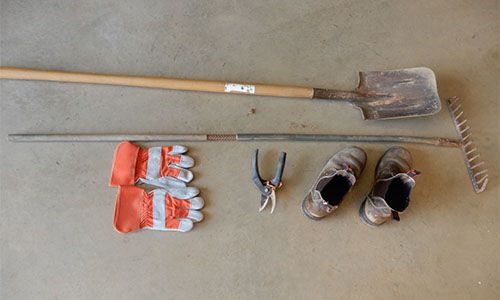

If you’re dealing with a few scattered plants, then it’s the best choice to suit and dig them manually. If the soil is damp, this is simpler, and better achieved before any seed appears.
Make sure you remove everything (leaves, stems, and roots) and do not place them in the compost. Put it in a bag and dump it into the regular garbage.
Related: Remedies – Herbal Wound Healing Salve
Removal of Poison Ivy
You can cut the vine at the base and leave the upper part of the plant to die off – just be careful when you finally kill it, because even dead plants contain urushiol and can still cause a rash.
Now back to the roots. You can either dig them out, or you can outdo the ivy by maintaining a thick, short lawn. Another alternative for the roots is smothering (read for details below).
In most cases, the plant irritates only humans and it is eaten by many animals, including domesticated ones such as goats and rabbits, particularly the young shoots. You can hire a goat anyway. But don’t touch any animal that has been in contact with poison ivy because the oil on their fur would be present.
Removal of Poison Hemlock
For tall plants, I minimize contact by first chopping off the top of the plant with either my shovel or secateurs, leaving about one foot at the base to help dig out the tap roots (or read below about smothering).
For dispersed plants, once the mature plants are fully eliminated (do not forget to dig up the annoying tap root), then typically it’s only a matter of re-visiting the site and keeping a vigilant eye out for the next 2 or 3 years for the juvenile plants.
Luckily the dispersal of seeds is small, so it’s unlikely to be too far from where you dug up the parent plant. Using a weeding tool, the juvenile plants are much easier to cut, and you can spray very young seedlings with a vinegar solution.
Related: 14 Powerful Natural Remedies For A Sinus Infection
Decrease the PH and Increase the Shade
Poison Hemlock, especially under heavy shade, has a hard time establishing itself in acidic soils. Ideally you want to keep soil disturbance to a minimum, so try planting an acid loving perennial and dropping the pH by watering it in with a vinegar solution after the adult plants have been removed. Avoid any of the solution touching the leaves.
The drop in pH can last for a month or up to a year, so a cheap pH meter is often a major investment, depending on the type of soil and the rainfall.
Biological Control
The hemlock moth (Agonopterix alstroemeriana) is the only insect that can help with controlling large infestations of poison hemlock. The downside is that they can be expensive to buy, but for around $100 you can have a crew of tiny employees doing the hard work for you.
Smothering Method for Poison Ivy and Poison Hemlock
One low cost method that can be utilized for any weed is smothering. Lawn clippings, wood chips, straw, gravel or even other weeds can be used. Anything to stop the sunlight from germinating the seeds or stimulating re-growth.
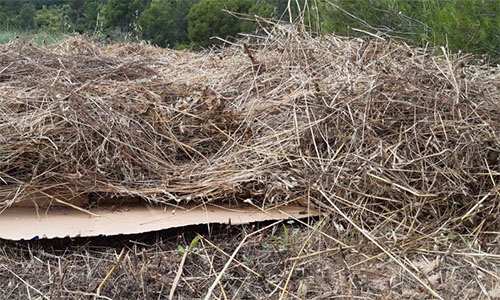

Some hints to maximize the effectiveness of smothering are:
- Remove as much of the weed as possible first. The fewer leaves it has, the less chance it has to keep growing. A weed eater (especially one with a blade) can be an efficient way to do this, just make sure you wear a full-face mask and eye protection.
- A few sheets of overlapping newspaper or cardboard should be laid down first, with the smothering materials over the top.
- Completely cover the infested area. Too much is better than not enough.
- Make sure the smothering layer is at least 4 inches at all times. The layer will settle and start breaking down, so aim for 6 inches when initially laying down a smothering layer.
- Keep the area smothered for as long as the seeds remain viable.
How Not to Remove Poison Ivy and Poison Hemlock
Burning any of these poisonous plants isn’t recommended. The plant toxins are released into the smoke, and inhalation can cause serious respiratory problems.
Household vinegar solutions desiccate all plant leaves but it almost has no effect on existing roots. And why it’s not really going to destroy mature plants. Of this reason, a solution of vinegar would only be effective in destroying very young seedlings which have no roots.



